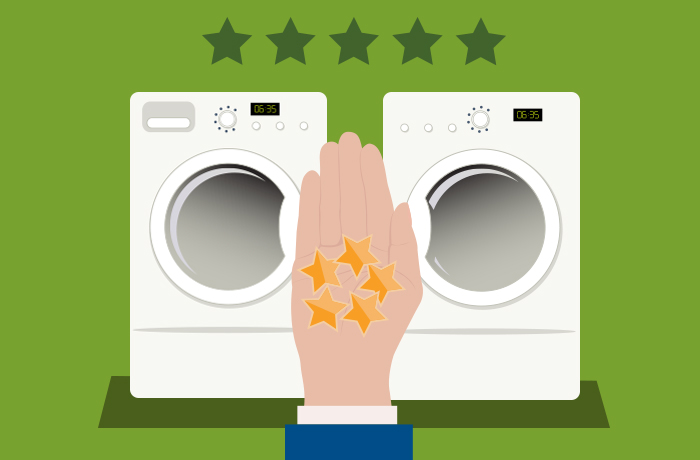Consumer Reports saves the day (and my laundry)
Posted on March 21, 2017 at 6:00 am
By Gwendolyn Haley
It was like a scene from a horror movie. I was alone in the house when a loud banging and clanging started from the depths of the basement—as if something were trying to break free. I walked down the stairs to investigate. As I looked into the laundry room, all I could think was “Wow! You don’t normally see that kind of behavior from a major appliance.” The washing machine was banging into the dryer and literally walking across the floor during the spin cycle.
After doing all the normal troubleshooting of checking to make sure the machine was level and so on, I realized that we needed professional help. Alas, the professional prognosis was that it was too late and the machine could not be saved. (Pro tip: if your washing machine is directly over a floor drain, you can have a leak for years and not be aware of it until the machine rusts to bits.) We bid our faithful washing machine adieu.
My new dilemma: What kind of washing machine to buy?
Often people make their major purchase decisions based on urgency, price, and recommendations from their friends and family. These are heart, not head, decisions. Then after the decision has been made and the money spent, we see people come into the library to check reviews on the item they just purchased. I’ve done that before, with really mixed results. This time, I decided to take my time, use the laundromat for a while, and do the research.
Now that Consumer Reports is available online, it’s easy to do the research in advance of purchasing. And with your Spokane County Library District card, you can access it for free, from anywhere—even the appliance showroom. The reviews and ratings consider several factors separately, such as washing performance, energy and water efficiency, noise, vibration, and so on, and then provide an overall score taking into account all the factors.
Since the machine I was replacing was 15 years old, I knew our family wanted to make energy and water efficiency a priority, as well as washing performance and capacity (we have three kids, after all). Price was another big consideration (again, three kids). I could also limit the search by style: top load with or without agitators, front load washers, etc. I read articles weighing the merits of front loaders versus top loaders. I found tips on how to do a better job with sorting laundry and choosing wash cycles and temperatures for better results. When I was done, I felt like I had just completed an advance course in laundry science.
After spending some time looking over the various reviews, I was able to narrow our choices down to a couple of models that would work for us. Armed with the confidence that I knew what we needed, my husband and I were free to focus on shopping for the best price.
The main disadvantage of our information-overload culture and the easy availability of information (good or bad, real or fake) is the sheer quantity of information without knowing for sure where it originated. The question we are all asking these days is “Can I trust this?”
That’s where Consumer Reports comes in. The magazine (and online version) has been around for decades and is published by a non-profit consumer advocacy organization that has no shareholders. The magazine accepts no advertising and pays for all the products they test. The reports are completely transparent about what they are testing and how they test. It’s so nice to be able to really trust a source. Gain access to Consumer Reports through the District’s Digital Resources webpage.
Now that we have the washing machine problem sorted, the next project will be the scary laundry room itself. It’s either a DIYer’s dream or nightmare. The library has another good digital resource for that—the Home Improvement Reference Center.
Tags: appliances, buying, buying guide, consumer reports, digital library, DIY, parents, price comparison, research, reviews, technology, teens


